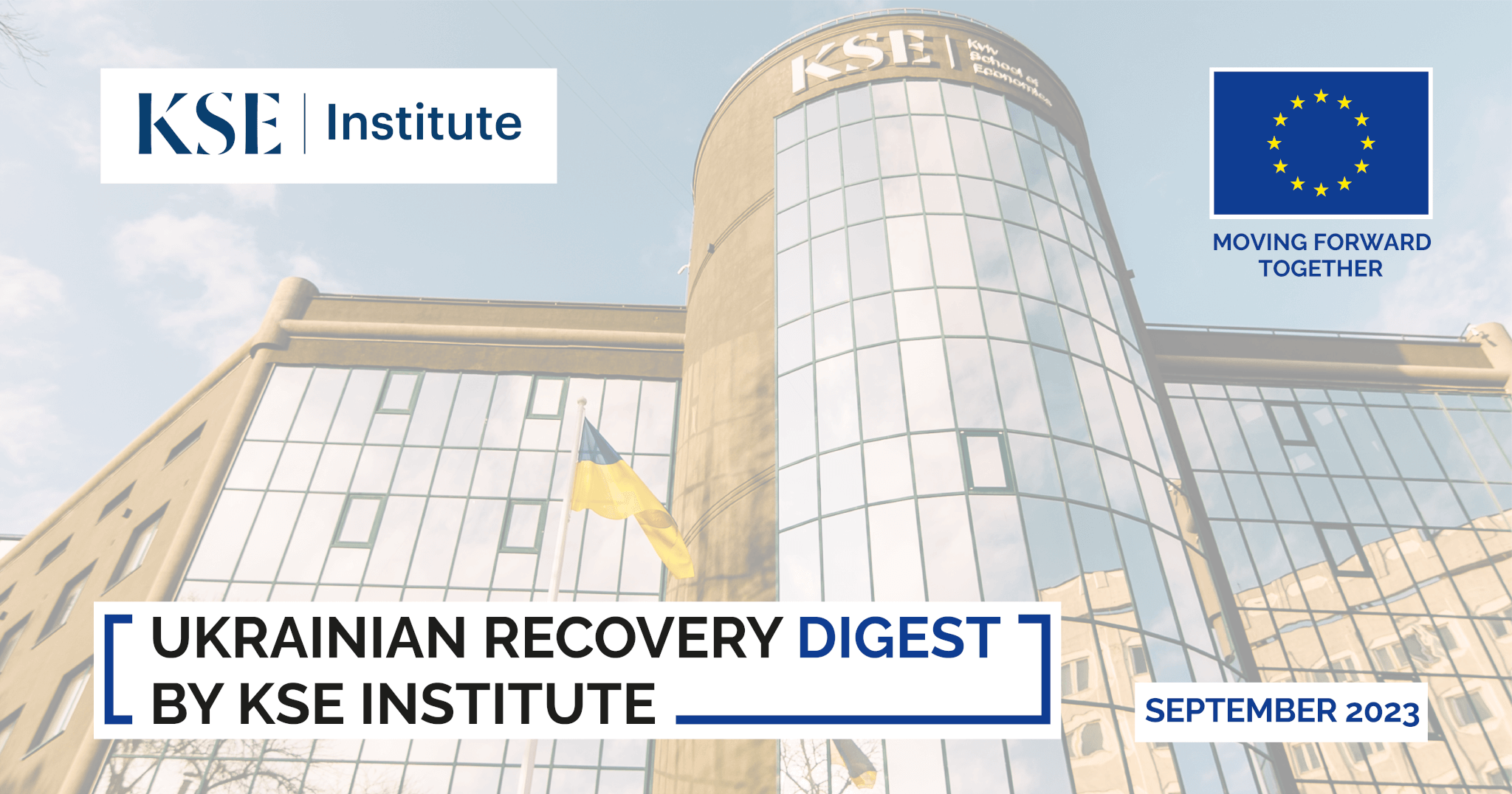- Kyiv School of Economics
- About the School
- News
- The September Issue of the Ukrainian Recovery Digest released by KSE Institute
The September Issue of the Ukrainian Recovery Digest released by KSE Institute
17 October 2023

KSE Institute experts presented the new issue of the Ukrainian Recovery Digest for September 2023. The digest is devoted to the issues of Ukraine’s 2024 budget draft, cost of demining, countering Russian grain narratives, infrastructure damage caused by Russia, Ukraine’s recovery efforts with a focus on the Ukraine Facility, and impact of sanctions on Russian economy.
Public Finance. The 2024 budget draft mirrors the priorities of the preceding year, emphasizing defence, security, and social protection. Buoyed by optimistic economic forecasts including 5% GDP growth and 14% inflation, it anticipates a 25.6% revenue increase to reach USD 41.1 bn, largely due to reallocating military Personal Income Tax (PIT) to the state budget. This budget projects a USD 39 bn deficit (20.4% of GDP) and is backed by funding from international partners.
Demining. The invasion has left about 30% of Ukraine’s land contaminated with explosive ordnance (EO), posing a significant threat to both lives and economic activity. Among the most affected are small-scale agricultural producers, constituting 65% of the sector and contributing 10% of cereal and leguminous crop production. With approximately 9% of their farmland contaminated, the estimated cost of demining for over 22,000 small producers could reach USD 250m.
Grain Deal. Russian narratives about Ukrainian grain trade are misleading. Ukraine exported grain to low-income countries during the Grain Deal, including humanitarian aid to Africa. Ukraine plays a vital role in global food security, being a top exporter of sunflower oil, corn, and wheat. Russia’s claims of ensuring food security in Africa don’t align with their export data, and their contribution to humanitarian food aid programs is minimal, just 0.2% of the UN World Food Programme’s in 2022.
Damages. As of September 2023, marking the 16th month of the full-scale war, the documented damages to Ukraine’s infrastructure caused by Russia’s invasion have reached USD 150.5bn (at replacement cost). The growth amounted to USD 0.7bn, which is modest considering that the previous update was three months ago. The largest part of the increase is attributed to education assessment’s updates (plus USD 0.4bn).
Ukraine Facility. The Ukrainian government, with expert input, is finalizing a concept note for the EUR50 bn Ukraine Plan under the EU’s Ukraine Facility program (2024-2027). This plan aims to drive economic growth, internal reforms, and European integration. The concept note outlines macroeconomic projections, five key reform areas, sector-specific changes, and priority sectors like energy, agri-food, transport, critical materials, and processing industry.
Sanctions. The KSE Institute Sanctions Group conducted several new studies, providing crucial insights into the impact of sanctions on Russia’s military capacity, oil exports, and overall economic situation: Russia’s Military Capacity & Imported Components, Russian Seaborne Oil Exports, and KSE Institute’s Russia Chartbook.
You can receive new issues of the Ukrainian Recovery Digest from KSE Institute experts by subscribing to our newsletter. To do so, kindly complete the dedicated form here: https://docs.google.com/forms/d/1Sj6yo_Uyts-RtACpXkGXfNeGGuTlXoHuEcK919OMeik/edit
The Digest was prepared with the support of the European Union and includes the results of research conducted by the Kyiv School of Economics, which was made possible by the support of the UK Government (UK Aid), the United States Agency for International Development (USAID), the International Renaissance Foundation and the World Bank.
